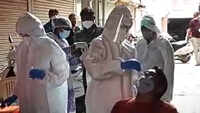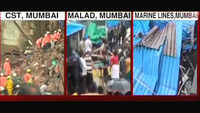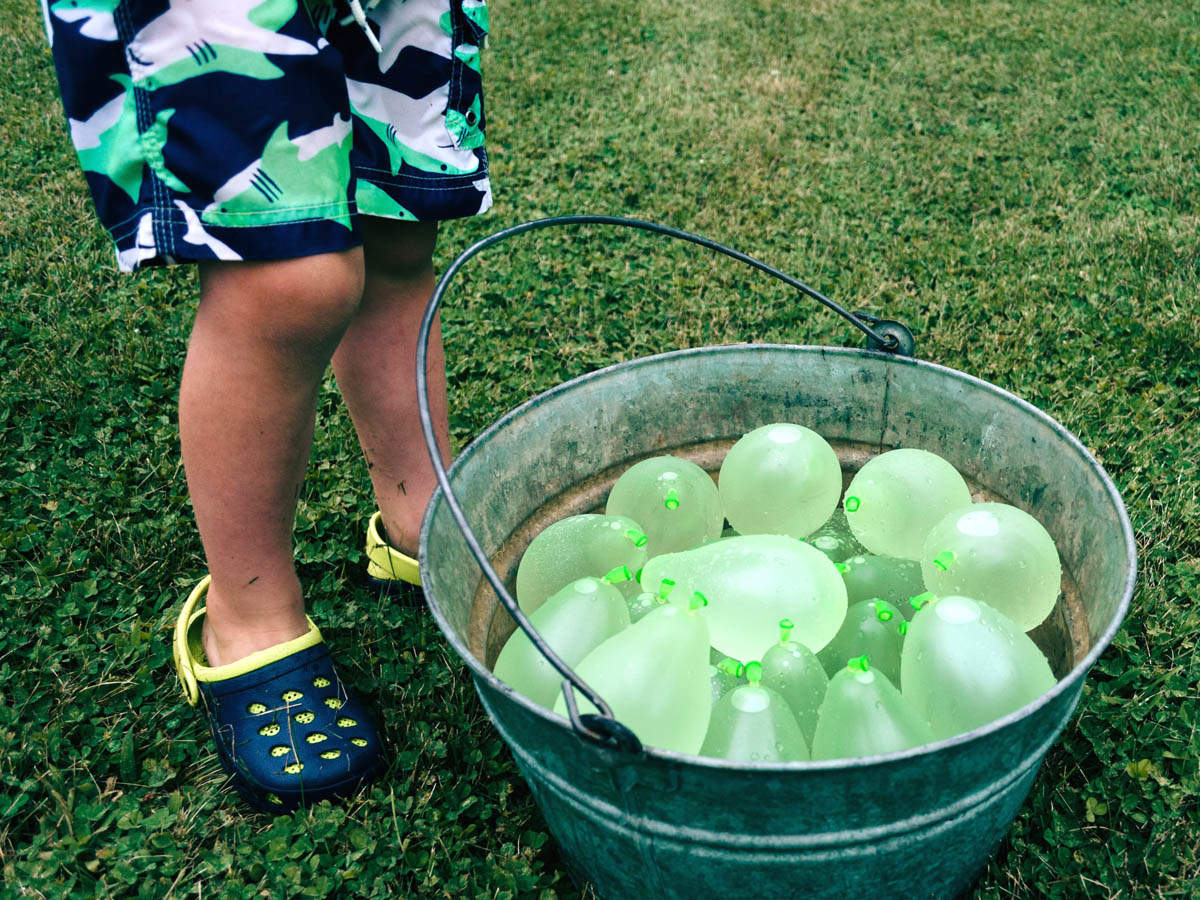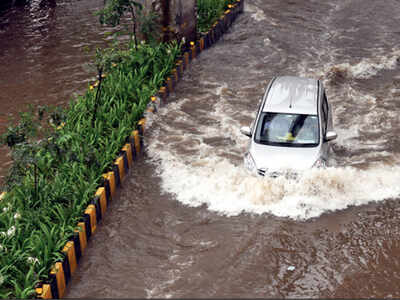
MUMBAI: With 191.2mm of rain reported in the 24 hours ending 8.30am on Thursday, the Santacruz observatory of the India Meteorological Department (IMD) recorded its second highest July precipitation this monsoon season and the third highest after 2015.
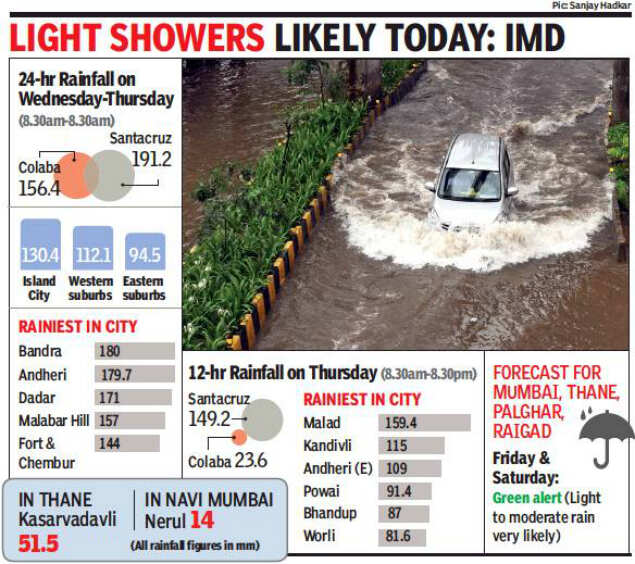
On July 2-3, the city had received 207.2mm rainfall. Last year, between July 1-2, the Santacruz station had recorded 375.2 mm of rainfall, which has been the highest one-day rain recorded in a decade.
The intense rain activity started on Wednesday with the island city recording more rain compared to the suburbs, but after 8.30am on Thursday, the suburbs got more drenched. The catchment area lakes in Thane and Nashik districts from where Mumbai receives its water supply have not recorded significant rain. Explaining the rain pattern, weathermen said on Wednesday, cloud bands (rain clouds) were strong near the coast, and as they moved into the city, they gave the suburbs significant rains and fizzled out before reaching the catchment areas. In the 24 hours ending 8.30am on Thursday, the island city received 130.45mm rainfall, western suburbs 112.15mm and eastern suburbs 94.55mm.
This has also been a wet month for the city with 1,152.6mm of rainfall so far, much more than its normal average July rain of 840.7mm. But the rain intensity is expected to reduce from Friday and IMD has given a ‘green’ alert. “Images of Mumbai radar and satellite indicate scattered clouds over south Konkan with a weak offshore trough pattern-...From Friday, light to moderate rain is very likely,” said S Hosalikar, deputy director-general (western region), IMD.
In the 24 hours ending 6am on Thursday, rainfall recorded in the major catchment area lakes was almost negligible with Bhatsa receiving 8mm, Modak Sagar 5mm and Tansa 2mm. Tulsi and Vihar located in Mumbai, recorded 90mm and 125mm rainfall, respectively. On Thursday, the total water stock was 3.73 lakh million litres. On July 16, 2019, it was 7.06 lakh million litres.
Rainfall in Navi Mumbai crossed the 1,000-mm mark.

On July 2-3, the city had received 207.2mm rainfall. Last year, between July 1-2, the Santacruz station had recorded 375.2 mm of rainfall, which has been the highest one-day rain recorded in a decade.
The intense rain activity started on Wednesday with the island city recording more rain compared to the suburbs, but after 8.30am on Thursday, the suburbs got more drenched. The catchment area lakes in Thane and Nashik districts from where Mumbai receives its water supply have not recorded significant rain. Explaining the rain pattern, weathermen said on Wednesday, cloud bands (rain clouds) were strong near the coast, and as they moved into the city, they gave the suburbs significant rains and fizzled out before reaching the catchment areas. In the 24 hours ending 8.30am on Thursday, the island city received 130.45mm rainfall, western suburbs 112.15mm and eastern suburbs 94.55mm.
This has also been a wet month for the city with 1,152.6mm of rainfall so far, much more than its normal average July rain of 840.7mm. But the rain intensity is expected to reduce from Friday and IMD has given a ‘green’ alert. “Images of Mumbai radar and satellite indicate scattered clouds over south Konkan with a weak offshore trough pattern-...From Friday, light to moderate rain is very likely,” said S Hosalikar, deputy director-general (western region), IMD.
In the 24 hours ending 6am on Thursday, rainfall recorded in the major catchment area lakes was almost negligible with Bhatsa receiving 8mm, Modak Sagar 5mm and Tansa 2mm. Tulsi and Vihar located in Mumbai, recorded 90mm and 125mm rainfall, respectively. On Thursday, the total water stock was 3.73 lakh million litres. On July 16, 2019, it was 7.06 lakh million litres.
Rainfall in Navi Mumbai crossed the 1,000-mm mark.

Coronavirus outbreak
Trending Topics
LATEST VIDEOS
City
 Mumbai rains: 3 people trapped as chawl collapses in Malvani area
Mumbai rains: 3 people trapped as chawl collapses in Malvani area  AMU student lodges complaint against fellow student who allegedly threatened her on social media
AMU student lodges complaint against fellow student who allegedly threatened her on social media  Minor raped in Covid-19 isolation ward of Patna Medical College and Hospital, guard held
Minor raped in Covid-19 isolation ward of Patna Medical College and Hospital, guard held  Gangster Abu Salem's aide Gajendra Singh arrested by Special Task Force from Noida
Gangster Abu Salem's aide Gajendra Singh arrested by Special Task Force from Noida
More from TOI
Navbharat Times
Featured Today in Travel
Get the app
